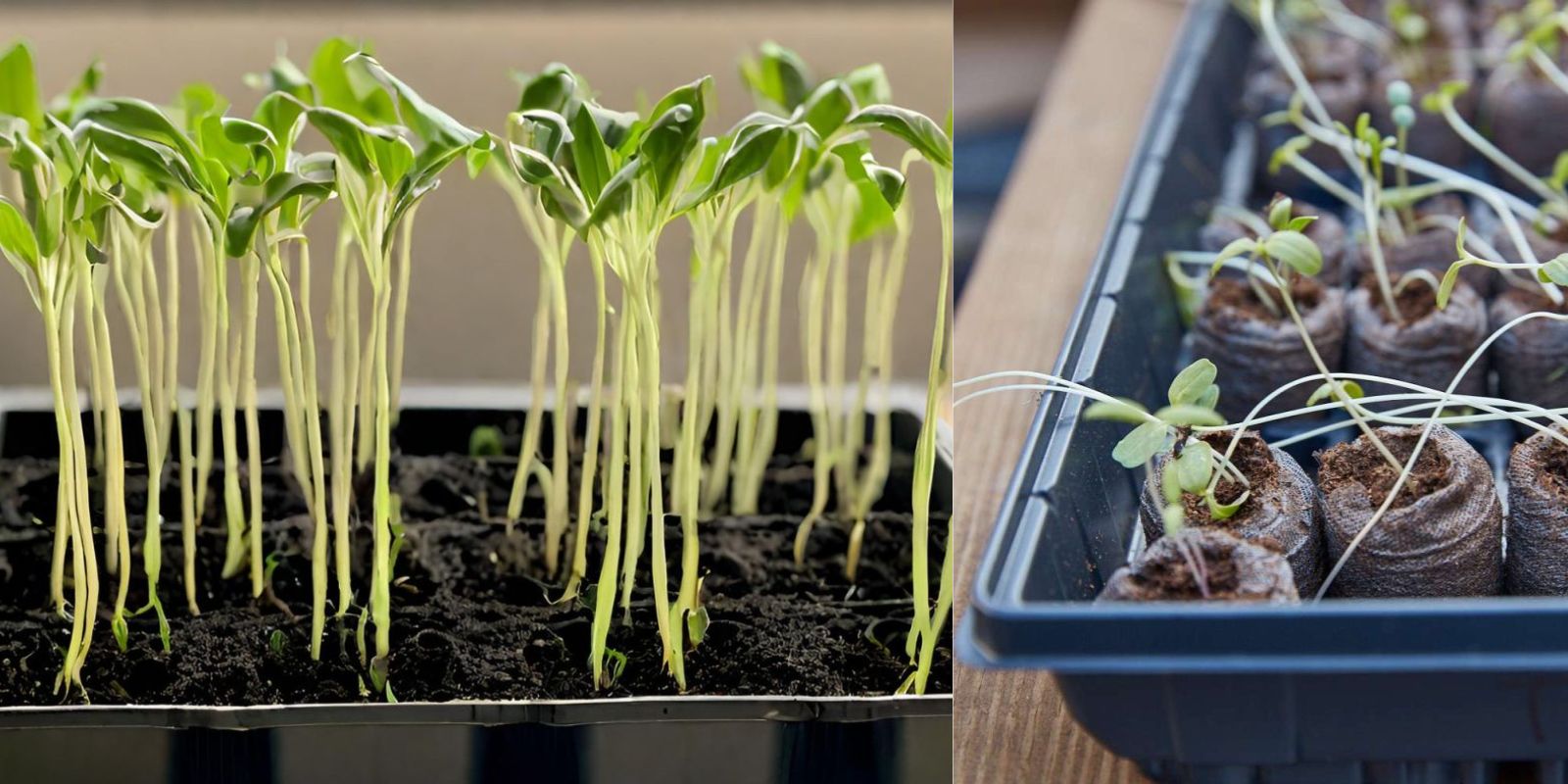Leggy seedlings can be a frustrating setback for both novice and experienced gardeners. These elongated, weak plants not only look unappealing, but they may also struggle to grow strong and healthy once transplanted into your garden. Understanding the causes of leggy seedlings and how to prevent and fix them can make all the difference in your gardening journey. This comprehensive guide will walk you through everything you need to know about keeping your seedlings robust and ready for the outdoors.
Understanding Leggy Seedlings
Leggy seedlings are characterized by long, thin stems with few leaves. They often lean or stretch toward the light source, indicating that they are not receiving adequate illumination. This phenomenon usually occurs due to insufficient light, but other factors like overcrowding and improper watering can also contribute.
Causes of Leggy Seedlings
- Insufficient Light: The most common cause of leggy seedlings is a lack of light. When seedlings do not receive enough brightness, they stretch toward the light source, leading to weak, elongated growth.
- Poor Air Circulation: Good air circulation is crucial for strong seedlings. If they are kept in a stagnant environment, they may become weak and leggy.
- Overcrowding: When seedlings are too close together, they compete for light and resources, leading to stretching and weak stems.
- High Nitrogen Levels: Excessive nitrogen from fertilizers can cause rapid, leggy growth, making seedlings more prone to bending and flopping.
- Inadequate Watering: Both over-watering and under-watering can stress seedlings, causing them to stretch or grow poorly.
Prevention Strategies
Preventing leggy seedlings starts with creating the right environment for your plants. Here are several effective strategies to ensure your seedlings grow strong from the start:
1. Provide Adequate Light
Choose the Right Light Source: Ideally, seedlings need at least 12-16 hours of bright, indirect light daily. Consider using grow lights if natural light is insufficient, especially during the winter months.
Positioning the Lights: Keep grow lights just a few inches above the seedlings. As they grow, adjust the lights to maintain this distance. This practice helps to prevent stretching and encourages compact growth.
2. Rotate Seedlings
Ensure Even Light Exposure: Regularly rotate your trays or pots so all sides of the seedlings receive equal light exposure. This simple step can help prevent one side from growing taller than the other.
3. Thin Seedlings
Avoid Overcrowding: If you’ve sown seeds densely, thin them out once they develop their first true leaves. Removing the weaker seedlings allows the stronger ones to receive more light and space to grow.
4. Use Stronger Pots
Transplanting: If you notice your seedlings are becoming leggy, consider transplanting them into deeper pots. This provides better support for the stems and allows for more extensive root development.
5. Increase Air Circulation
Promote Strong Growth: Good air circulation can strengthen seedlings. If you’re using a grow tent or indoor setup, consider using a small fan on a low setting to circulate air around the seedlings.
6. Fertilize Sparingly
Balanced Nutrient Use: Over-fertilizing, especially with nitrogen-rich fertilizers, can cause excessive leafy growth at the expense of strong stems. Use a balanced fertilizer and apply it in moderation.
Fixing Leggy Seedlings
If your seedlings have already become leggy, don’t despair! There are several effective methods to help them regain strength and stability:
1. Repotting
Choose a Deeper Pot: Gently remove the leggy seedlings from their pots and transplant them into deeper containers. Bury the stems up to the first set of true leaves. This encourages new root growth along the buried stem, resulting in a stronger plant.
2. Support with Stakes
Providing Physical Support: If repotting isn’t an option, you can use small stakes or toothpicks to support leggy seedlings. Gently tie the stems to the stakes using soft ties or string, being careful not to damage the plants.
3. Increase Light Exposure
Adjust Light Sources: If your seedlings are leggy, it’s crucial to immediately increase their exposure to light. Move them closer to a window or adjust your grow lights to ensure they receive adequate brightness.
4. Improve Watering Practices
Balanced Watering: Monitor your watering practices to ensure you’re not over or under-watering. Soil should be kept consistently moist but not soggy. Consider using a moisture meter to help gauge the needs of your seedlings.
Best Practices for Healthy Seedlings
To foster healthy growth in your seedlings and prevent future issues, consider these best practices:
1. Start with Quality Seeds
Choose the Right Seeds: Begin with high-quality seeds from reputable sources. Healthy seeds are more likely to produce strong seedlings.
2. Use Quality Potting Mix
Proper Soil Mix: Use a well-draining, high-quality potting mix that retains moisture without becoming waterlogged. A mix specifically designed for seed starting is ideal.
3. Monitor Environmental Conditions
Temperature and Humidity: Keep an eye on temperature and humidity levels in your growing area. Most seedlings thrive in temperatures between 65°F and 75°F (18°C to 24°C) with moderate humidity.
4. Harden Off Seedlings
Acclimatization: Before transplanting seedlings outdoors, gradually acclimate them to outdoor conditions over a week or two. This process, known as hardening off, helps them adjust to changes in light, temperature, and wind.
Conclusion
Leggy seedlings can be a common challenge, but with the right knowledge and practices, you can easily prevent and fix this issue. By ensuring your seedlings receive adequate light, proper support, and a conducive growing environment, you’ll set them up for success. Remember, gardening is a learning experience, and each setback provides valuable lessons for your future endeavors. Happy gardening! 🌱✨
Call to Action
If you found this guide helpful, share your own seedling success stories or tips in the comments below! Let’s learn and grow together! #GardeningTips #SeedlingSuccess #HealthyPlants #GardenGoals #PlantCare #HomeGardening #GardenCommunity

